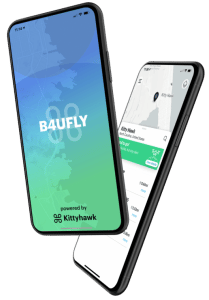Public Safety Resources
-
Operate a Drone
-
Starting a Drone Program
-
Sightings and Reports
-
Public Safety & Law Enforcement Toolkit
-
Emergency Situations
-
FAA Contacts for Law Enforcement
Government agencies (including Federal, State, and tribal), law enforcement, and public safety entities have two options for operating drones under 55 pounds.
Option One
Fly under 14 CFR part 107, the small UAS rule. Part 107 allows operations of drones or unmanned aircraft system (UAS) under 55 pounds at or below 400 feet above ground level (AGL) for visual line-of-sight operations only.
Option Two
Fly under the statutory requirements for public aircraft (49 U.S.C. §40102(a) and §40125). Operate with a Certificate of Waiver or Authorization (COA) to be able to self-certify UAS and operations for flights performing governmental functions.
Law enforcement and public safety agencies are realizing the potential of using drones to enhance their missions. Some agencies choose to hire drone pilots certified by the Federal Aviation Administration (FAA) to conduct operations for them. But if your agency wants to conduct its own drone operations or create a program with multiple pilots and drones, this primer will help you get started:
Drones in Public Safety: A Guide to Start Operations
To support first responders and other entities affiliated with them, the FAA can quickly issue authorizations for natural disaster and other emergency response:
Waivers and Authorizations Supporting Emergency UAS Operations
Understanding Your Authority: Handling Sightings and Reports
Federal Aviation Regulations prohibits the unsafe or unauthorized operation of an aircraft, including drones. Unsafe operations may result in substantial civil penalties and possible action against an operator's FAA-issued certificate, or may be subject to criminal response by law enforcement in accordance with local laws and ordinances. As a law enforcement officer, you are often in the best position to deter, detect and investigate unsafe or unauthorized drone operations.
Click
here for more information on handling sightings and reports, including:
- Registration Information
- Handling Complaints Involving UAS
- FAA Penalties
- Law Enforcement Checklist
- Law Enforcement Pocket Card
This toolkit, developed by the Federal Aviation Administration, is designed to assist law enforcement and public safety entities in operating and handling situations involving drones or UAS.
Public Safety and Law Enforcement Toolkit
First responders and other organizations responding to natural disasters or other emergency situations may be eligible for expedited approval through the Special Governmental Interest (SGI) process.
Operations that may be considered include:
- Firefighting
- Search and Rescue
- Law Enforcement
- Utility or Other Critical Infrastructure Restoration
- Damage Assessments Supporting Disaster Recovery Related Insurance Claims
- Media Coverage Providing Crucial Information to the Public
To apply for a waiver through the SGI process you must be an existing Part 107 Remote Pilot with a current certificate OR you must have an existing Certificate of Waiver or Authorization (COA). For the Emergency Operation Request Form and other information, visit the FAA Emergency Situations site.
Special agents from the FAA's Law Enforcement Assistance Program (LEAP) are your point of contact for federal, state, local, tribal, territorial and international law enforcement agencies. LEAP special agents can provide information on drone enforcement and registration matters. Providing a LEAP special agent with reports of suspected unauthorized UAS incidents in a timely manner increases the FAA's ability to take enforcement action when appropriate. (NOTE: You may contact any LEAP agent if your assigned agent is not available).
For further information on contacting a LEAP agent, click here.
For further information on the LEAP Program, click here.

Do you use the
B4UFLY
Mobile App?
Recreational flyers who only fly their drone for fun, now have an improved app – B4UFLY – to help show where they can and cannot fly with interactive maps.
